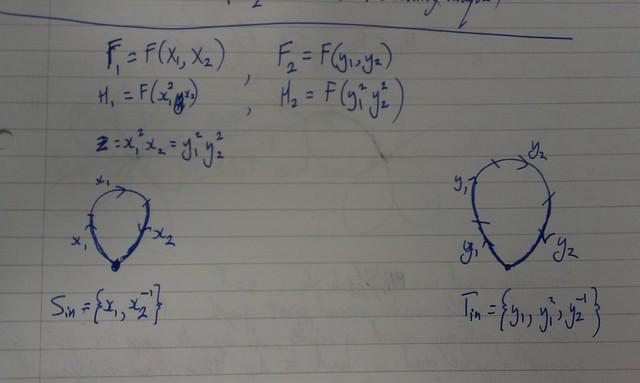Liza Frenkel is visiting the department, and she wants me to write an algorithm to compute double coset representation normal forms for free products with amalgamation.
Here are some notes I typed up in write maths, see maths as she and Andrew talked. I’m just putting them up here so I don’t lose them.
Suppose:
, free groups (finitely generated by and , respectively)
,
an isomorphism
i.e. we have a finite generating set (in fact a basis) for (and for ) and generating sets for and
Consider a group generated by , with
has presentation
Choose a set such that
(we are assuming is infinite)
every element of is equal to , for unique ,
can do the same for
Let .
A word representing is in normal form if , with , .
Suppose . Rewrite using double coset representatives
is in reduced form if and
or
or and , belong to different factors
Let be a folded subgroup graph of . Take two copies.

For some word , the question is how to find .
Algorithm:
Read all possible loops round first graph, to get .
Keep reading letters round the graph until there is no edge corresponding to the current letter. Call this .
Start at the other end, reading loops to get , and then maximal partway round a loop.
Then either there are no letters left to look at, and , or some bit in the middle, and .
We want to all have maximal length.
Example

i)
Membership problem
Can write the in normal form.
Question: Given in normal form, is ?
Constructing a folded graph which makes use of the normal form is tricky.

